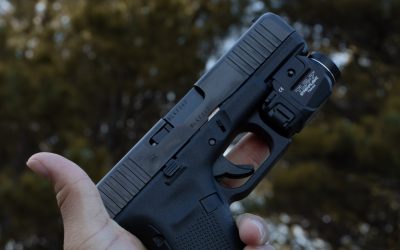Skip’s Tips > Newsletters > What determines gauge?
What Determines Gauge?
The most popular gauge in Europe is the 16 gauge.
Skip Walters


Sign up to receive insider tips from our Master Gunsmith!
There is a lot of confusion surrounding the terms, “Bore and Gauge.” I shall endeavor to define these terms and their roots as pertains to firearms.
Early shotguns were not much different than smooth bore muskets. A .70 caliber “Brown Bess” (the British military arm used against the colonists in the American Revolution) could be loaded with shot, spherical ball or with “buck and ball”. Usually, the projectile or projectiles were made of lead and weighed approximately 1 ounce for each shot.
When rifled barrels came onto the firearm scene, the projectile sizes were very specific for each type of rifled barrel. Bullet molds were made for each rifle caliber. In fact, the most accurate rifles were sold with a bullet mold made specifically for that individual rifle. These rifles could be ordered from the local gunmaker in any configuration the purchaser desired. Hence, the days of firing shot out of a musket were gone. Accuracy at any range was paramount.
Shotguns could also be ordered and made with any diameter bore and in any configuration desired. At that time, most people were unable to understand, let alone relate, engineering specifications to their gunmaker. As a result, a measurement system had to be devised.
Though people weren’t very educated, they were cost conscious. Lead was relatively expensive and was sold by the pound. A system was devised to relate bore/gauge to a pound of lead. It was reasoned that a pound of lead can be equally divided by ounces into 16 ounces. If a pound of lead is formed into spheres of 1 ounce each, they will all be of equal diameter. This is how a 16 gauge bore diameter is determined. Likewise, a pound of lead divided into 12 equal weight spheres will also be the same diameter, or a 12 Gauge. This holds true for shotguns, whether they are 32, 28, 20, 16, 12, 10, 8 or 4 Gauge/Bore. The only exception is the .410, which uses an actual English decimal dimension.
To this day, the most popular gauge in Europe is the 16 gauge. Europeans refer to it as a “16 bore” and in the US it is called a “16 gauge.” Either term is correct.




